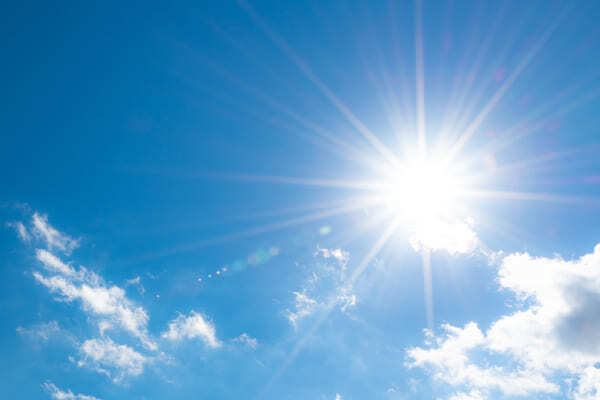
In the months with an "erre" do not sunbathe.
Someone may have heard this popular saying. And as is often said, there is always a grain of truth in sayings. Let's see why.
Ultraviolet (UV) radiation is a major risk factor for skin cancers (epitheliomas and melanoma) because it induces damage in skin cells. If sun damage repair mechanisms are ineffective (genetic mutations) or sun exposure is excessive or incorrect (burns, mid-day exposure, failure to apply sunscreens) the mutated cells proliferate and form tumors.
The main skin cancers are basal cell (80 percent) and spinocellular (16 percent) epitheliomas and melanoma (4 percent), which, respectively, have an incidence in Italy of 100, 20, and 13 cases per 100,000 inhabitants per year. The incidence trend is sadly steadily increasing.
UV rays, producing free radicals, are also mainly responsible for photoaging: loss of skin elasticity and thickness and pigmentation changes (sunspots).
In addition, when we protect ourselves from the sun we must also think about our eyes because they can suffer similar damage from UV rays. The skin of the eyelids and conjunctiva can develop spinocellular epitheliomas, the lens can become opaque and evolve into cataracts, and the cornea can become inflamed evolving into photokeratitis.
But we were saying about the months with an "erre": there is a correlation between the hole in the ozone layer and the recommendation not to be exposed during these months. To find it, let's take a step back.
The hole in the ozone layer
The ozone layer is the layer of the atmosphere that absorbs and, in part, retains UV rays from the sun. We can, therefore, compare it to a super beach umbrella that protects the Earth, and therefore us, from UV coming from the sun.
For the past forty years or so, it has been discovered that there are holes in the ozonosphere (at the Arctic and Antarctic) and areas of reduced thickness (at mid-latitudes) caused by the presence of humans (responsible are, for example, such as aerosol cans and the refrigeration circuits of refrigerators and air conditioners). In fact, human activity daily produces halogenated gases (chlorine and bromine) that destroy the ozone layer.
The ozone hole is dynamic, it opens and closes, and right in early spring a series of chemical reactions make the ozone layer thinner and the holes at the Poles become wider and then close again in early summer.
This is why in months such as February, March and April it is best not to expose yourself since a greater proportion of UV rays arrive on Earth and thus expose the skin and eyes to more potential damage than during the rest of the year.
However, one should never let down one's guard against the sun and expose oneself responsibly and appropriately without, however, demonizing it because its beneficial effects on the skin and mood are many.
So, enjoy the sun, without forgetting SPF and sunglasses!
Addendum:
Since 1987, the Montreal Protocol has been in force, an international treaty by which we are committing ourselves to no longer produce and dispose of products containing the halogenated gases (chlorofluorocarbons and bromofluorocarbons), which are at the root of damage to the ozone layer.
A study by the U.S. Environmental Protection Agency (EPA), compared the current pattern of regulations with one of no regulation on the emission of gases harmful to the ozonosphere showing how thanks to the Protocol, and its subsequent amendments, 443 million skin cancers, 2.3 million deaths from skin cancers, and 63 million cataracts were potentially avoided considering a population born in the U.S. between 1890 and 2100.
Sources
- Madronich S, Lee-Taylor JM, Wagner M, Kyle J, Hu Z, Landolfi R. Estimation of Skin and Ocular Damage Avoided in the United States through Implementation of the Montreal Protocol on Substances that Deplete the Ozone Layer. ACS Earth Space Chem. 2021 Aug 10;5(8):10.1021
- van der Leun JC. The ozone layer. Photodermatol Photoimmunol Photomed. 2004 Aug;20(4):159-62.
- Melanoma Guidelines, AIOM 2020
- Non-Melanoma Cutaneous Tumors Guidelines, Cutaneous Squamous Cell Carcinoma, AIOM 2019
- Non-Melanoma Cutaneous Tumors Guidelines, Basal Cell Carcinoma, AIOM 2019




